Happy Friday the 13th!
The way this week is shaping up, the only bad luck is going to be for the fish...
As a side note, please send us pictures of the fish you catch on Long Beach Bait Company bait to get your picture on our website and for a chance at great prizes. Please send photos to longbeachbaitcompany@yahoo.com
This is our bait and fish report for Friday 7/13.
Our receiver is currently loaded with perfect anchovies for Albacore fishing (4-6 inch), nice bait sized sardines and bait sized mackerel (for you shark enthusiasts.
No matter what you're targetting, come by the receiver and we will have the bait you need this weekend. As usual, Martin will be on the receiver all weekend and you can call him on Channel 11 or at (562) 455- 9928. He will be able to give you the lastest bait and fishing information when you talk to him.
Now to the fish report...
Offshore
There is finally some substantial amounts of albacore within range of Long Beach![/B] If you want to head offshore, but don't feel like fighting the crowds in the parking lot formerly known as the 182, there are some options... [B]Several of our friends have reported good albacore fishing in the last few days as close as the 209.[/B] If I was going offshore, I would load up with a scoop of chovies and a handful of mackerel (there have been some marlin seen in the albacore area) and head out to either the 209 or the 181. The 181 kicked out about a dozen fish for one of our clients on Tuesday and the 209 gave up 5 fish for another client on Wednesday. For those of you that are inexperienced in offshore fishing here is a little rundown on how to catch albacore
There is more to successful offshore fishing than running out to a set of numbers and dropping back the trollers. Although there is no obvious structure to attract fish offshore (like an island or reef), there is still structure that needs to be located. This structure is usually a deep offshore bank (like the 181 or the 209).
Albacore do most of their feeding at night deep in the water column (thus the big eyes for finding food in low light conditions). The albacore are often caught around these deep water banks because the banks cause upwelling fronts where the albacore are able to feed on the small fishes, squids, and crustaceans that are plentiful in these areas. During the day, the albacore will come to the surface and feed on the bait that is on the surface (including your Long Beach Bait Company anchovies).
Anothe type of structure can be a defined temperature or water color break. Usually temperature and water color breaks in open water are caused by upwellings or conflicting currents. These areas, much like the deep water banks, tend to be areas where the bait aggregates and thus attracts the pelagic game fish.
Before you head offshore, it's definitely worth your while to check your Terrafin and Chloropyll charts for defined temperature breaks near an area that there have been albacore caught. Once you decide on an area to target and have made the trip to get there, keep an eye on your water temp gauge and try to find temperature breaks. A temperature break can be minor (1 or 2 degrees) or significant (3 to 4 degrees) the more significant the temperature break, the more likely the area is to hold fish. Once you start trolling, it is a good idea to use your GPS to track your trolling pattern and make sure to mark the spots where you get bit or meter fish so that you can go back through those areas again. When trolling, it is important to pay attention to what you are doing as trolling 10 miles in a straight line is probably not going to be very productive. Once you are in the area you want to fish, try trolling in a zig zag manner and if you see fish or mark them on the meter, you should box the area before driving on. If you are fishing a temp or color break, you should try trolling along it and also try trolling across it from different directions.
There is no magic trolling jig that catches albacore, but there are some basic patterns that work. Early in the morning, it is best to troll dark colors like black and purple or Mean Joe Green. As the sun comes out, switch to lighter colors like Mexican Flag or red and white. You should troll multiple rods with different size and color lures when you start out, but be willing to try different patterns if other boats in the area are hooking up and you're not. If you get bit consistently on one color or size, you should switch out your other lures to that color or pattern.
A mistake that a lot of private boaters make is stopping the boat the second that they get bit. Often the fish that bites your troller is the first fish in the school. If you continue to troll for another 30 seconds after you hook up, you will often have more fish come up and bite your other lures. Once you're hooked up, it is imperative to get some chum in the water immediately, so whoever isn't hooked up should throw a scoop of bait before putting their own line in the water. A lot of times this can make the difference between catching one troll fish and catching a bunch of fish on bait.
If you are hooking troll fish and seeing them on the meter but not getting any bites once you stop the boat, try dropping a yo-yo jig down while you are drifting. The albacore will often bite this jig on the sink and if they don't, use a jerky stop and go retrieve when you bring the lure back to the boat. For some reason, the albacore really like this retrieve.
There is a lot more to albacore fishing than I've written here, but you'll have to wait till next time to read more...
Catalina
The seabass bite has pretty much ended, but there are still a few fish to be caught. You can refer to my post from 7/6 to get more info about what has been happening. I would look for another bite at the end of the new moon cycle and if not then hopefully by the next full moon (just a prediction)...
The calicos are biting well on the front side of the island and there are still quite a few yellows on that side as well. Most of the spots from the Isthmus to the west end have been biting well, so check out your favorite kelpline or reef. Most of the better scores on yellowtail have come from the areas to the west. The yellows on the front side tend to cruise up and down the island following the deeper ridges that run along the frontside of the island, so remember to check some of the deeper ridges in 70-90 feet of water before anchoring too close to the kelp. If the fish are in the deeper water, you should meter them when you are checking out the spot. If not, they will sometimes find your chumline. The most productive method to catch fish at this time of year is by flylining (sardine, anchovy or squid). If you fish with a sinker, you are going to catch mostly bass, which is a good thing, unless you are targeting yellows.
San Clemente
The yellowtail are biting at Clemente Sportboats fishing Clemente in the last week have been doing well on the yellows on the front side east end of the island. I haven't heard any reports from private boaters fishing the island, but I am sure that they are catching fish as well. Our good friend Tim Messmer fished Clemente earlier in the week on a sportboat and reported good surface iron fishing on the yellows. He ended up with 9 fish up to 35 lbs fishing a mint and white 7X. If you're heading across, I would check out the area from Purse Seine Rock up to White Rock.
Coastal
Palos Verdes Penninsula
Still some really good bass fishing to be had up the line with fish reported to 8 lbs this week on surface iron and sardines.
Horseshoe Kelp
There have been some spotty catches of baracuda on the horseshoe, but there hasn't been any consistent bite this week. The rocks around the horseshoe are starting to load up with calico bass which are readily biting the anchovies, sardines, swimbaits and surface iron. For more info on fishing the horseshoe, check out my report from 6/29.
Izor's Reefs
The bass (sandbass and calicos) have been biting at the Izor's reef as are a few scattered seabass. The bass have been biting the plastics really well, so if you are heading out there, I would suggest taking along a selection of 4-6" swimbaits (key lime has been the most effective color). For more information on fishing the Izor's Reef area, please refer to my report from 6/29.
Huntington Flats
The sandbass are late this year, but there have been some good catches in the last few days at the south end of the flats. With the availability of good calico bass fishing on the horseshoe and mixed bass fishing at Izor's, I don't think that it's worth the run...
That's about it for this week.
Now get out there and catch som fish!
See you on the water...
Friday, July 13, 2007
Subscribe to:
Post Comments (Atom)

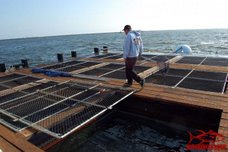
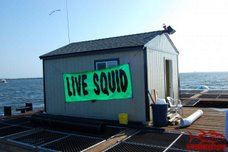
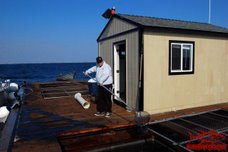
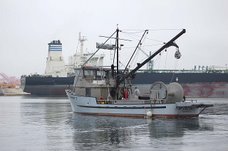
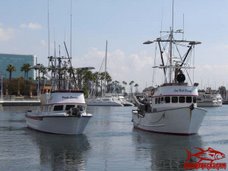
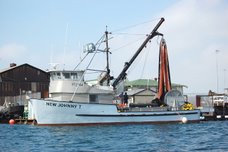
1 comment:
I'm impressed.
Thoughtful
ideas... Found this here on longbeachbaitcompany.blogspot.com [url=http://easyrvoutdoors.com]RVs[/url]
Post a Comment